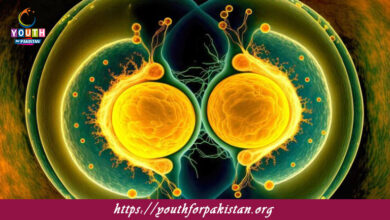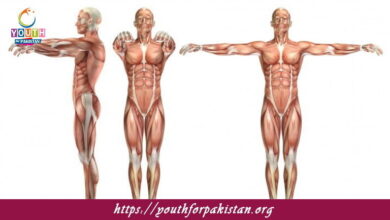Biological Molecules Proteins MDCAT MCQs with Answers

Welcome to the Biological Molecules Proteins MDCAT MCQs with Answers. In this post, we have shared Biological Molecules Proteins Multiple Choice Questions and Answers for PMC MDCAT 2024. Each question in MDCAT Biology offers a chance to enhance your knowledge regarding Biological Molecules Proteins MCQs in this MDCAT Online Test.
What is the basic unit of proteins?
a) Nucleotide
b) Amino acid
c) Monosaccharide
d) Fatty acid
Which level of protein structure involves the sequence of amino acids in a polypeptide chain?
a) Primary
b) Secondary
c) Tertiary
d) Quaternary
What type of bond stabilizes the secondary structure of proteins?
a) Ionic bonds
b) Disulfide bonds
c) Hydrogen bonds
d) Peptide bonds
Which of the following is a characteristic of the tertiary structure of proteins?
a) Alpha helices and beta sheets
b) The linear sequence of amino acids
c) The three-dimensional folding of a polypeptide chain
d) The interaction of multiple polypeptide chains
Which bond is responsible for the formation of disulfide bridges in proteins?
a) Hydrogen bonds
b) Ionic bonds
c) Covalent bonds
d) Van der Waals interactions
Which type of protein is responsible for catalyzing biochemical reactions?
a) Enzymes
b) Hormones
c) Structural proteins
d) Transport proteins
Which protein structure is characterized by the arrangement of multiple polypeptide chains?
a) Primary structure
b) Secondary structure
c) Tertiary structure
d) Quaternary structure
Which of the following amino acids is essential for protein synthesis in humans?
a) Glycine
b) Glutamine
c) Serine
d) Leucine
Which of the following is not a function of proteins?
a) Providing structural support
b) Serving as enzymes
c) Storing genetic information
d) Transporting molecules
What determines the function of a protein?
a) Its amino acid sequence
b) Its molecular weight
c) Its pH
d) Its solubility
Which type of protein is involved in muscle contraction?
a) Collagen
b) Actin
c) Hemoglobin
d) Insulin
What is the term for the loss of a protein’s three-dimensional structure?
a) Denaturation
b) Hydrolysis
c) Synthesis
d) Reformation
Which of the following amino acids contains sulfur?
a) Glycine
b) Leucine
c) Cysteine
d) Phenylalanine
What type of interaction stabilizes the tertiary structure of proteins?
a) Hydrogen bonds
b) Disulfide bonds
c) Hydrophobic interactions
d) Ionic bonds
Which protein structure involves alpha helices and beta sheets?
a) Primary structure
b) Secondary structure
c) Tertiary structure
d) Quaternary structure
Which of the following proteins is involved in oxygen transport in the blood?
a) Collagen
b) Hemoglobin
c) Insulin
d) Myosin
What is the term for a protein that helps other proteins fold correctly?
a) Chaperone
b) Enzyme
c) Hormone
d) Receptor
Which of the following methods is used to determine the primary structure of a protein?
a) X-ray crystallography
b) Nuclear magnetic resonance (NMR)
c) Mass spectrometry
d) Edman degradation
Which amino acid is often found in the turns of beta sheets in proteins?
a) Glycine
b) Valine
c) Glutamine
d) Tryptophan
Which of the following is a fibrous protein?
a) Albumin
b) Collagen
c) Insulin
d) Hemoglobin
Which protein function is associated with hormones?
a) Structural support
b) Catalysis
c) Signal transmission
d) Storage
What is the role of enzymes in biochemical reactions?
a) To increase the activation energy
b) To act as reactants
c) To speed up the rate of reactions
d) To decrease the specificity of reactions
Which of the following statements about enzyme specificity is true?
a) Enzymes can catalyze reactions involving a broad range of substrates
b) Enzymes are highly specific for their substrates
c) Enzymes lose their activity once they bind to a substrate
d) Enzymes change the equilibrium constant of a reaction
Which of the following is not a factor that affects enzyme activity?
a) Temperature
b) pH
c) Substrate concentration
d) Concentration of nucleic acids
What type of bond is formed between the amino group of one amino acid and the carboxyl group of another in a polypeptide chain?
a) Hydrogen bond
b) Disulfide bond
c) Peptide bond
d) Ionic bond
Which protein is responsible for the transport of glucose into cells?
a) Hemoglobin
b) Myoglobin
c) Glucose transporter
d) Actin
Which of the following is a protein that functions as an antibody?
a) Enzyme
b) Antigen
c) Immunoglobulin
d) Receptor
Which type of protein structure is stabilized by interactions between different polypeptide chains?
a) Primary structure
b) Secondary structure
c) Tertiary structure
d) Quaternary structure
Which amino acid is commonly involved in forming disulfide bonds in proteins?
a) Methionine
b) Tyrosine
c) Cysteine
d) Phenylalanine
Which technique is used to determine the three-dimensional structure of proteins?
a) Electrophoresis
b) X-ray crystallography
c) Spectrophotometry
d) Gel filtration
What is the primary role of structural proteins?
a) Catalyzing biochemical reactions
b) Storing nutrients
c) Providing support and structure to cells and tissues
d) Transmitting genetic information
Which of the following is an example of a regulatory protein?
a) Collagen
b) Insulin
c) Keratin
d) Actin
Which structure of a protein is primarily determined by hydrogen bonding?
a) Primary
b) Secondary
c) Tertiary
d) Quaternary
Which of the following proteins is a component of the cytoskeleton?
a) Hemoglobin
b) Myosin
c) Actin
d) Albumin
What is the main function of enzymes in metabolic pathways?
a) To store energy
b) To regulate cellular processes
c) To speed up biochemical reactions
d) To provide structural support
Which protein is involved in blood clotting?
a) Collagen
b) Hemoglobin
c) Fibrinogen
d) Myoglobin
What is the role of chaperone proteins?
a) To assist in protein degradation
b) To aid in protein folding and assembly
c) To act as antibodies
d) To transport molecules across membranes
Which of the following is not a type of protein structure?
a) Primary
b) Secondary
c) Tertiary
d) Quaternary
Which amino acid is known for forming the “kink” in the polypeptide chain?
a) Glycine
b) Proline
c) Leucine
d) Valine
Which protein function is associated with immune responses?
a) Enzyme catalysis
b) Storage
c) Signal transduction
d) Antibody production
Which of the following amino acids is known to be a precursor for neurotransmitters?
a) Glutamine
b) Valine
c) Serine
d) Phenylalanine
If you are interested to enhance your knowledge regarding Physics, Chemistry, Computer, and Biology please click on the link of each category, you will be redirected to dedicated website for each category.





